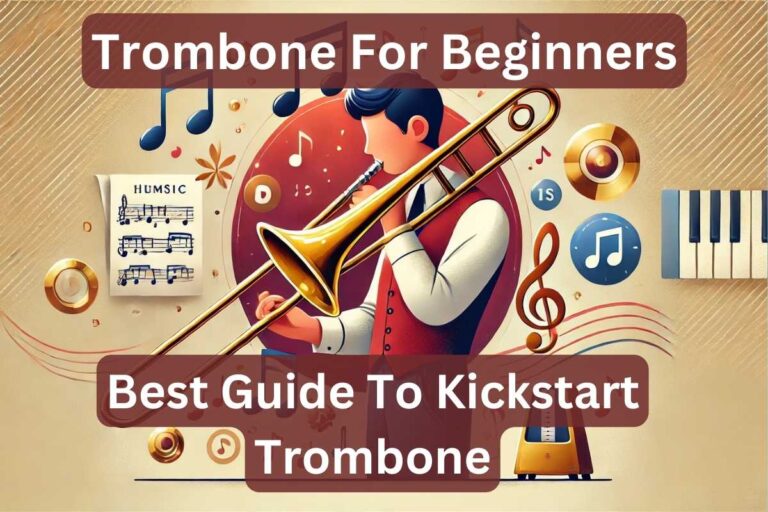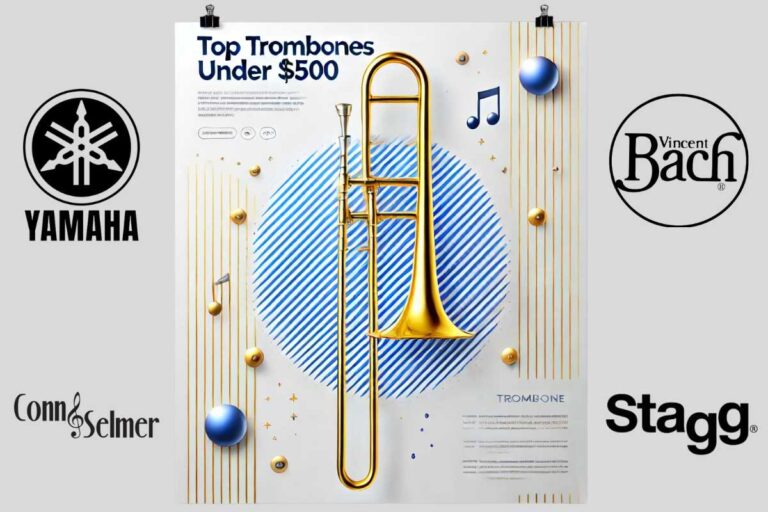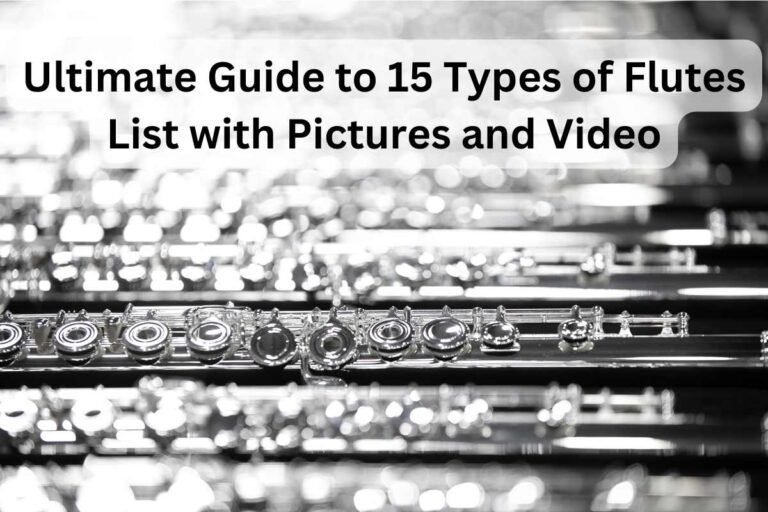15 Most Important Trumpet Parts | Ultimate Anatomy Guide 2023
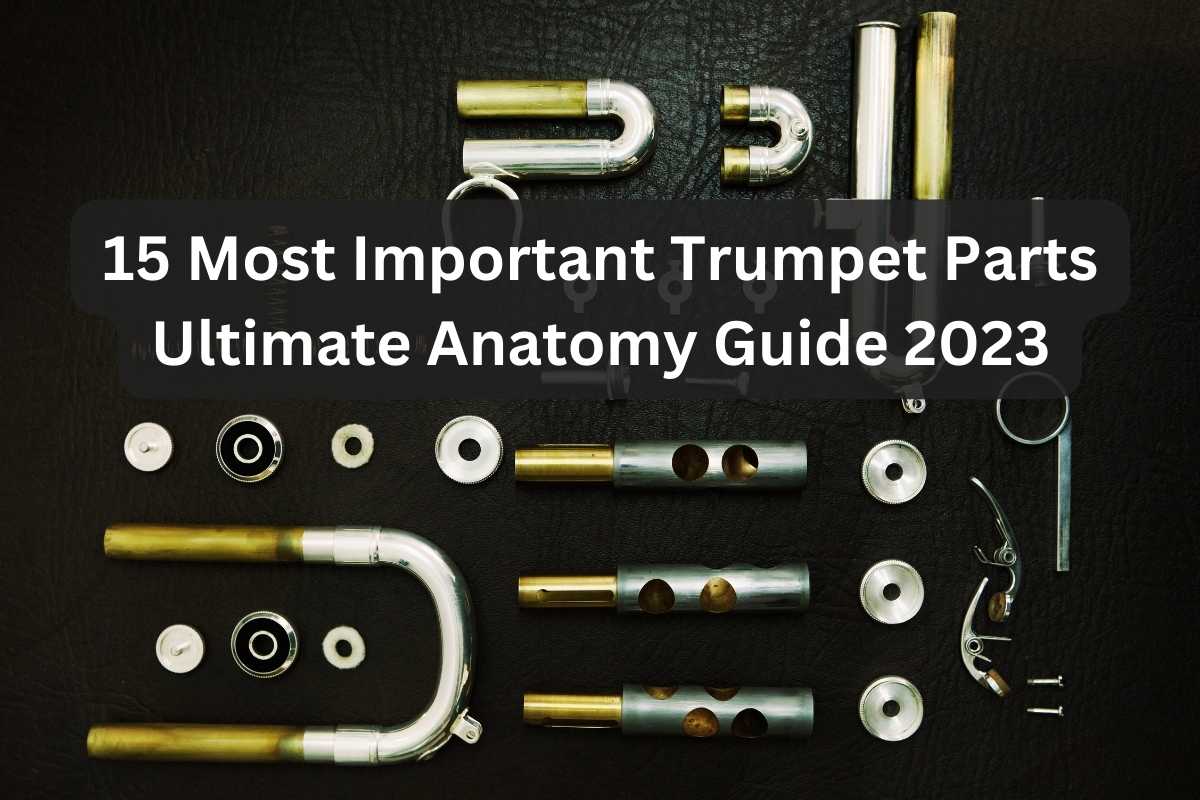
Are you curious to understand more about trumpet parts and anatomy? With our essential guide of 15 key parts ranging from valves and mouthpieces, to valve springs and more — discover all aspects of this iconic instrument to become an accomplished trumpeter! Read further for details of the essential components that form this beloved instrument as you gain more knowledge on their functions!
What Are The Main Trumpet Parts?
The trumpet is an incredible instrument that never ceases to amaze and mesmerize its audiences. Comprised of three main parts — its mouthpiece plays a pivotal role in creating its unique sound; valves control pitch and produce various notes; while its bell section amplifies and projects its player’s sound. Check out this post for more info on each component of this incredible instrument!
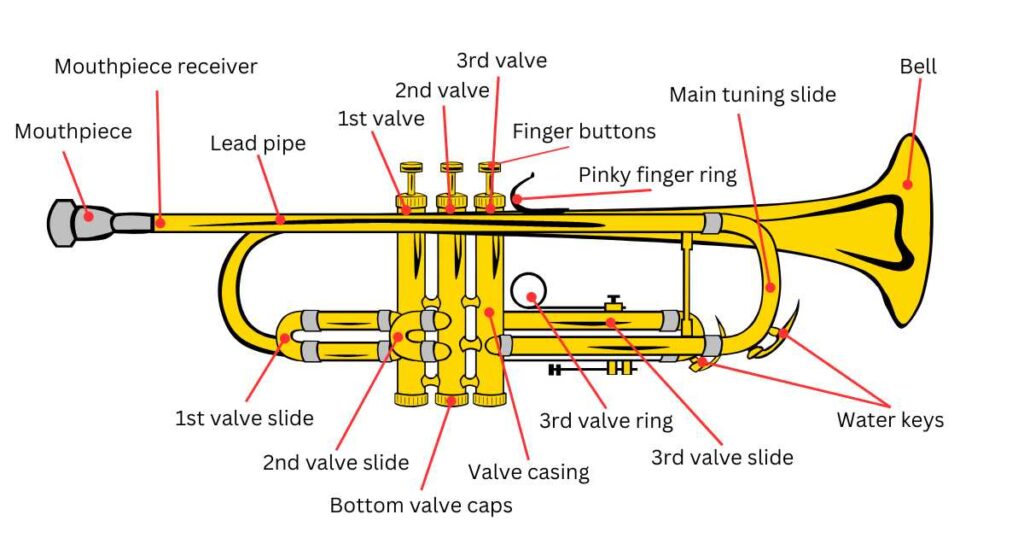
Mouthpiece
A mouthpiece plays an integral part of how an instrument sounds and feels; without one, the trumpet would simply be an empty metal tube. Some musicians even switch between different mouthpieces for different musical genres.
Trumpet mouthpieces come in various forms and sizes, all featuring a cup-shaped hollow that connects to a narrower shank. While larger cups provide greater sound production, smaller ones tend to make for simpler playing experience — though you may customize its shape and size according to your playing style.

Variations between mouthpieces are evident by their differences in terms of rim diameter, cup shape/depth/width and throat width; all these elements come together to produce a smooth sound yet modulated. Players use mouthpieces as the link between their instrument and them so as to direct air precisely and create buzzing effects with lips for producing sounds that have modulation effects that create such sounds.
As part of a trumpet’s sound, mouthpieces play an integral part. They should be treated like personal possessions in terms of care and hygiene; you should regularly remove them to clean, check for marks or nicks that could harm lips — as well as sterilize before and after each use to ensure optimal conditions! It is key that they stay in top shape!
Mouthpiece Receiver
The Mouthpiece Receiver of your trumpet is where you insert and secure your mouthpiece, fitting snugly against its main body.
Be sure to keep this part free from dirt or debris – should the mouthpiece become stuck, seek professional assistance.
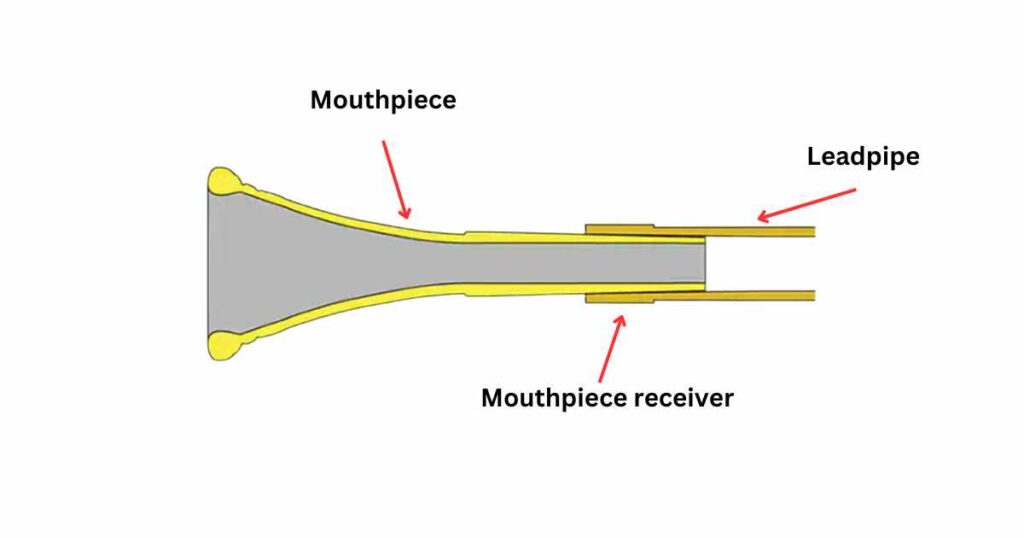
For any damage sustained on its receiver itself, you can have it repaired at local music stores; the leadpipe connects directly from it back onto it — take extra caution reattaching this connection in order to minimize risk to either its receiver or leadpipe!
Bell
A trumpet’s bell is like an increasingly wide piece of tubing with flared ends responsible for shaping its unique sound and volume by amplifying and channeling air vibrations to make an audible note – or “sound.” Think of the trumpet bell as being its speaker that provides us with such beloved tunes!
The bell of a trumpet is usually created separately and soldered onto its body later. For balance purposes, it should be made out of yellow brass. Depending on desired sound characteristics, it could also be coated in either gold for a deeper sound or silver to brighten things up more. Dented bells shouldn’t affect sound too drastically either way.
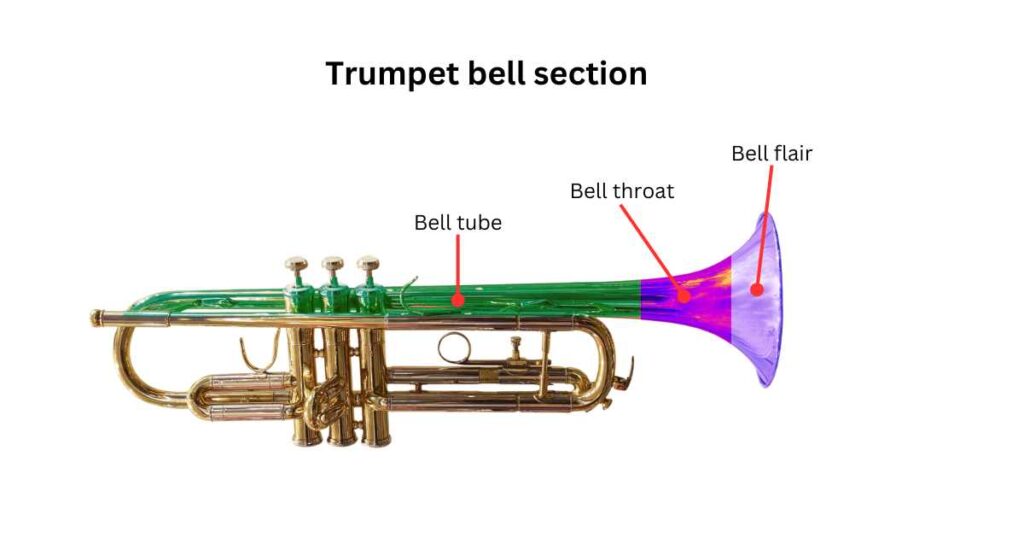
Bells come in various sizes, which affects how they sound. Larger bells have mellow tones, while smaller produce brighter sounds with sharper high notes; larger flares produce smoother tones than their counterparts.
Keep your bell looking its best by using silver polish, commercial cleaner and soft microfiber cloth to maintain it. Polish it until it achieves a mirror-like shine.
When not playing – be sure to either place the instrument on its stand or lay it with valve casings facing upwards – either will help prevent unwanted damage to its finish!
Lead Pipe
The leadpipe of a trumpet tubing system plays an integral role in its sound and feel, serving as the first point where air enters it, with an integral metal loop for your right hand’s pinky finger to connect through.
Leadpipe material, width, shape and taper rate all have an influence over its sound – many professional trumpet players switch out leadpipes for different sounds or effects.
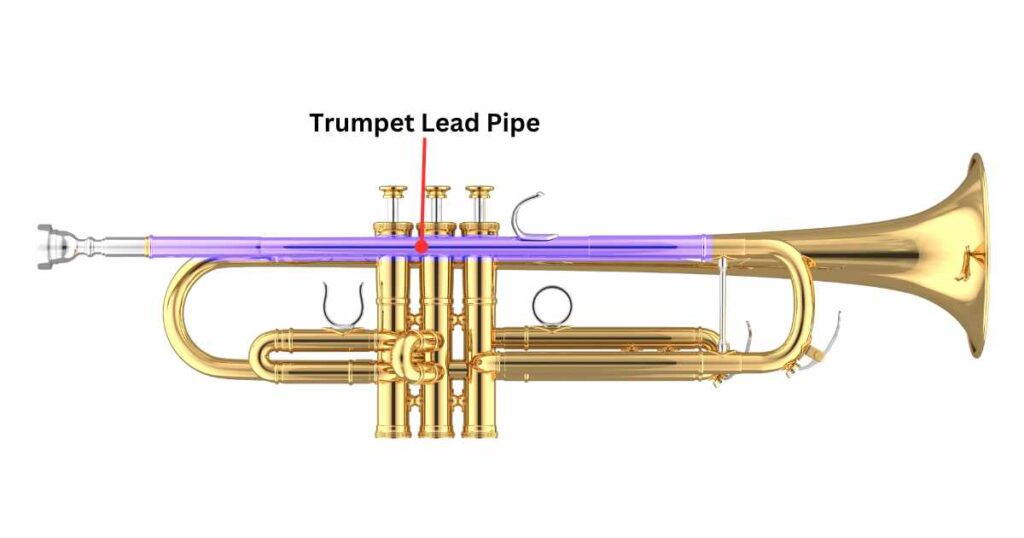
Regular maintenance of brass instruments is vital in protecting them against damage and maintaining an impressive sound. Make sure that you clean out and take good care with their leadpipe, connecting from the mouthpiece to the tuning slide. As this area may collect dirt or gunk, affecting the tone quality — keep this area free of gunk accumulating for optimal sound quality!
Reverse Leadpipe
Contrary to its conventional lead pipe counterparts, Reverse Lead pipes boast bends at both ends for more versatility when designing custom brass instruments.
Reverse lead pipes allow airflow more effectively compared to regular lead pipe instruments that don’t let air pass as freely and sound darker. With reverse lead pipe trumpets you typically achieve louder and brighter sounds.
Main Tuning Slide
The Main Tuning Slide of a trumpet is like its secret weapon! This handy instrument enables players to adjust tubing length in order to change pitch. It can be found directly between lead pipe and valves; just press in or pull out for maximum pitch control! Push or pull until you find that perfect sound!
Since main tuning slides can easily sustain damage, proper care should be taken in maintaining them regularly by greasing. Otherwise, sticking can occur and result in costly repairs down the line.
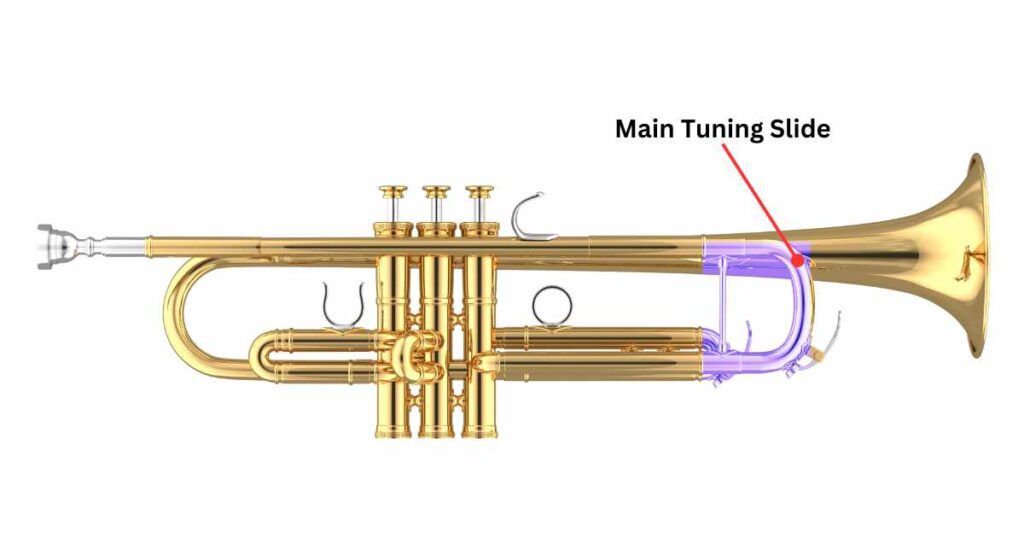
+2 sKnowing and properly using and caring for their main tuning slide are of critical importance to trumpet players in getting their instrument tuned properly.
Valves
Valves play an invaluable role in trumpet playing. Their purpose is to control pitch and provide more flexibility across notes. Air usually travels through certain passages within a trumpet’s chambers — with valves you can change these routes of airflow. There are three valves in total on this instrument: the first is closest; the third is farthest away.
Valves can make playing trumpet more interesting – just by pushing down on one or multiple valves, you can alter its notes when needed, creating all sorts of new pitches! Redirecting air through additional tubing makes valves longer which alters pitch — longer tubing means lower pitches; just pressing any single or combination of valves down will change everything!
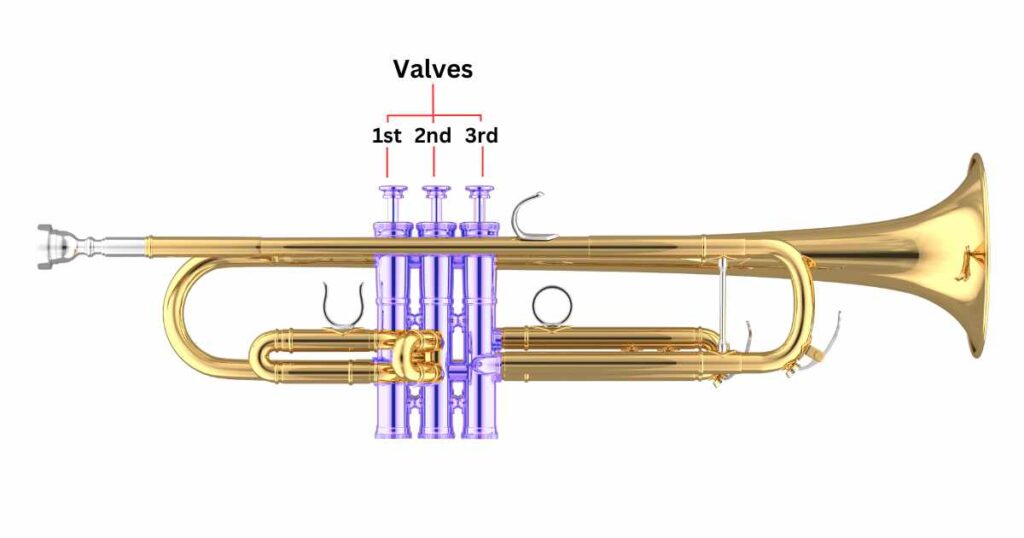
A valve contains holes within each cluster tube that direct air directly through its horn or additional tubing when valves are pressed down — this latter action brings down sound in stages as extra tubing connects between valves for sound damping purposes when they’re being used together or used alone to access all 12 pitches across multiple octaves. Here’s a handy breakdown of what each of these valves do:
- No valves depressed produce fundamental pitch
- 2nd produces a 1/2 step lower
- 1st produces 1 step lower
- 3rd produces 1 and 1/2 steps lower
- 1st and 2nd produce 1 and 1/2 steps lower
- 2nd and 3rd produce 2 steps lower
- 1st and 3rd produce 2 and 1/2 steps lower
Check out our post for Trumpet Fingerings and Downloadable Charts materials (in PDF) too!
Keep your valves functioning optimally by giving them some oil. Just unscrew the top valve cap and apply some drops around its outer perimeter — remember to reattach them correctly after this process, just in case they detach during cleaning or oiling!
Valves Pistons
Trumpet valve pistons are small components inside trumpet valves that enable airflow when depressing them. Translating force from pressing on a valve button into movement within its piston allows air to pass into various tubings in an instrument.
Valve pistons resemble hollow cylinders with holes for air release and springs attached — so when the finger button is released, they return into position when released by themselves without ever showing their contents; only their casing and button remain visible.
Finger Buttons (Top valve caps)
Finger buttons act like valve caps that your right hand’s fingers push on for valve opening or closing, often featuring cool designs for added comfort and style. Top caps sit near the middle of a trumpet and play an essential part in how its mechanisms operate.
The trumpet features three finger buttons to correspond with its three valves and adjust its airflow flow; the buttons can change its pitch. To play it you simply press these three finger buttons with the index, middle and ring fingers of your right hand — easy!
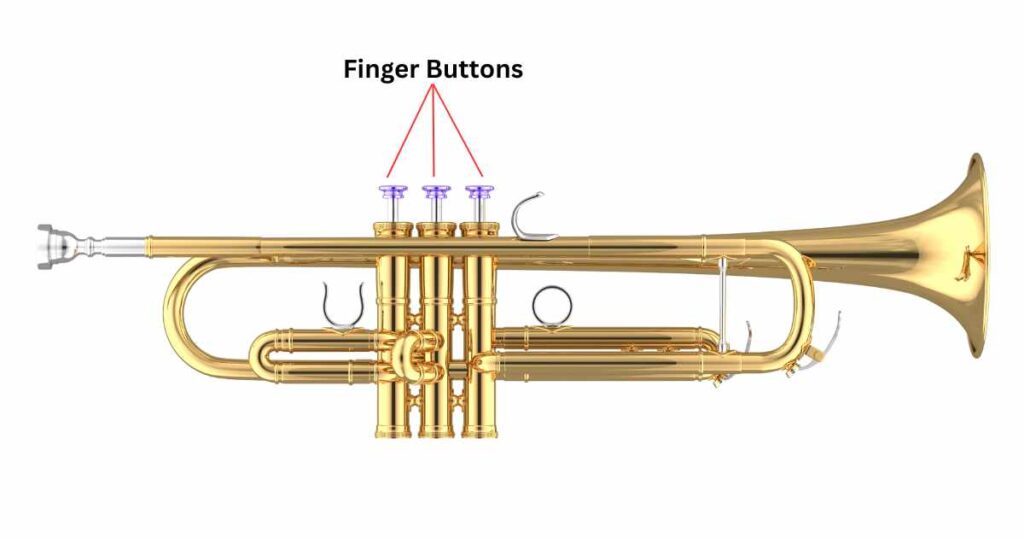
Balance the pressure applied to buttons carefully for an authentic sound; too much pressure may produce harsh, blaring tones – too little could result in slack. Finger buttons respond to both upward and downward movements — press/release carefully in order to avoid unintended results.
Regularly clean and maintain finger buttons as dirt or oil build-up may clog them and reduce responsiveness. A small brush or cloth may help ensure they stay responsive; for cleaning the valve and casing of trumpets, remove their top valve caps to access them directly for servicing purposes.
Valve Casing
Valve Casings are three-chambered tubes into which valve pistons fit flush — no air escapes as top valve caps securely fasten to them at their top points. Valve casings help move air around within a trumpet.
Pistons create tones when moved within their casings, which contain valve pistons that move up and down for different sound effects on the trumpet. If the piston is removed for cleaning purposes — it must be realigned properly as soon as it returns from removal for reuse.
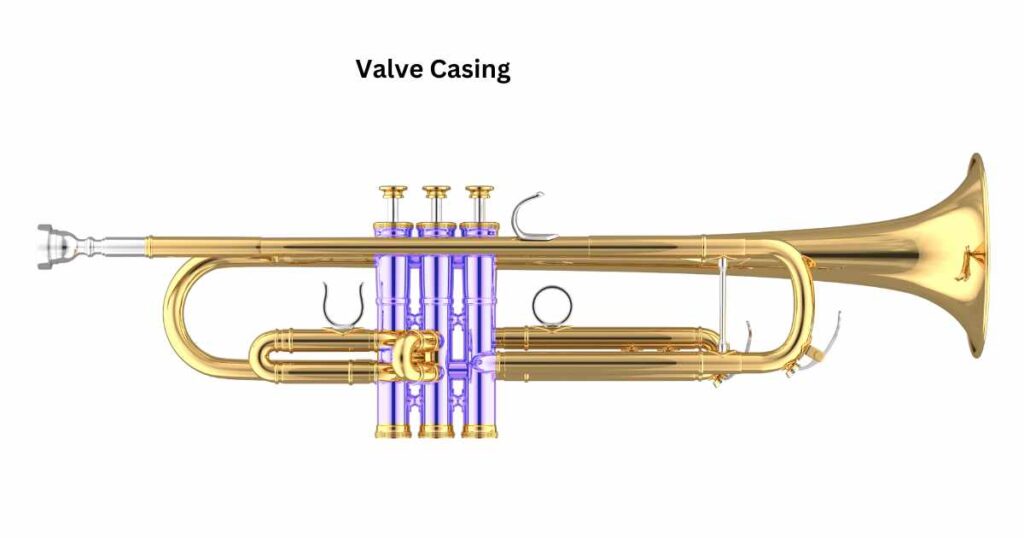
People’s views vary on how often trumpet valves should be oiled; one suggestion suggests daily oiling. Otherwise, you could consider oiling only every few weeks depending on which valve oil type you use — the casings are connected by pistons that need oil.
Bottom Valve Caps
Bottom valve caps are attached to valve casings by means of screws to protect players from gunk and oil dripping onto their lap while playing the trumpet. Made typically out of brass but also available in plastic or precious metals such as silver and gold.
These caps were created not only to enhance sound production but also to last over time and maintain performance standards — meaning you can rock out freely!
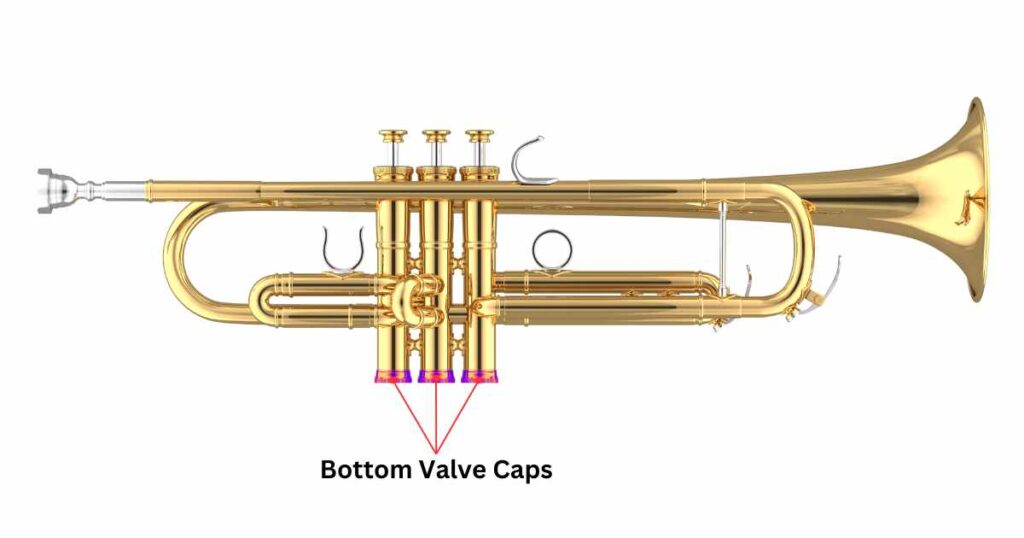
Bottom caps help balance the weight of a trumpet for greater comfort and control by protecting valve pistons while permitting smooth movements. Tweaking bottom caps affects how trumpet valves compress, altering tone and pitch. While these changes might seem minor, they make a noticeable impact when playing.
Give each bottom cap an occasional wipe with a paper towel to maintain cleanliness and avoid dirt or oil build-up — keeping bottom caps free of build-up ensures smooth valve operation for an enhanced playing experience!
First Valve Slide
The first valve slide connects directly with the closest valve in relation to you and lowers the pitch by two semitones when pressurizing it.
When pressing this valve — air flows directly through its slide (an extra tube) and lowers the pitch by one whole step (two semitones on a piano keyboard).
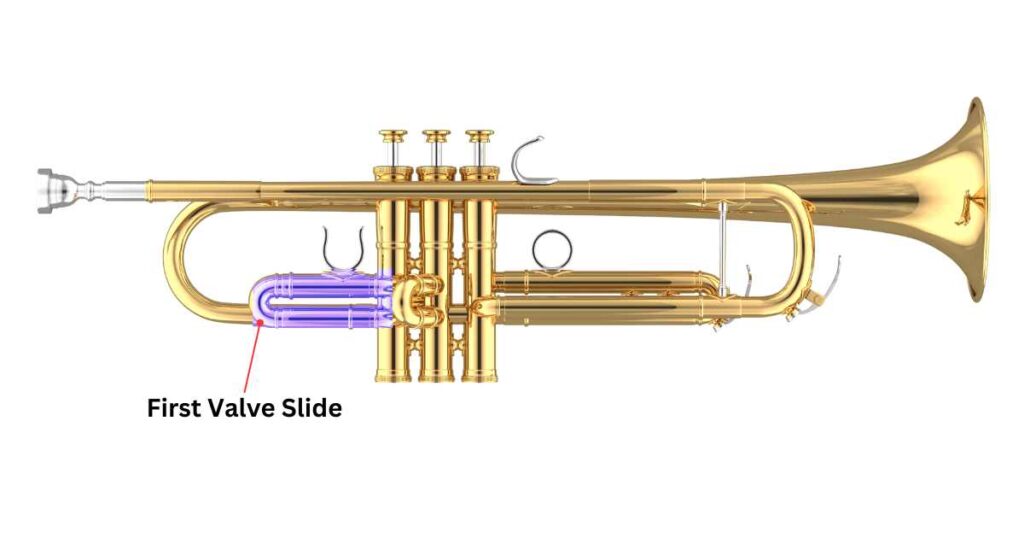
As you slide the first valve, your left thumb usually rests on a trigger or ring to make adjustments in pitch tuning by moving its slide forward and back — shift the slide to change notes as needed.
Mastering the first valve slide takes practice and an intuitive understanding of pitch adjustments, though novices should soon become adept at setting them accurately. Be careful not to damage any internal mechanisms — and don’t forget a regular cleaning for optimal functioning.
Second Valve Slide
Let’s now discuss the Second Valve Slide. As its name implies, it is a short slide connected to the middle valve that reduces pitch by one semitone and acts as the primary method of pitch reduction on a trumpet.
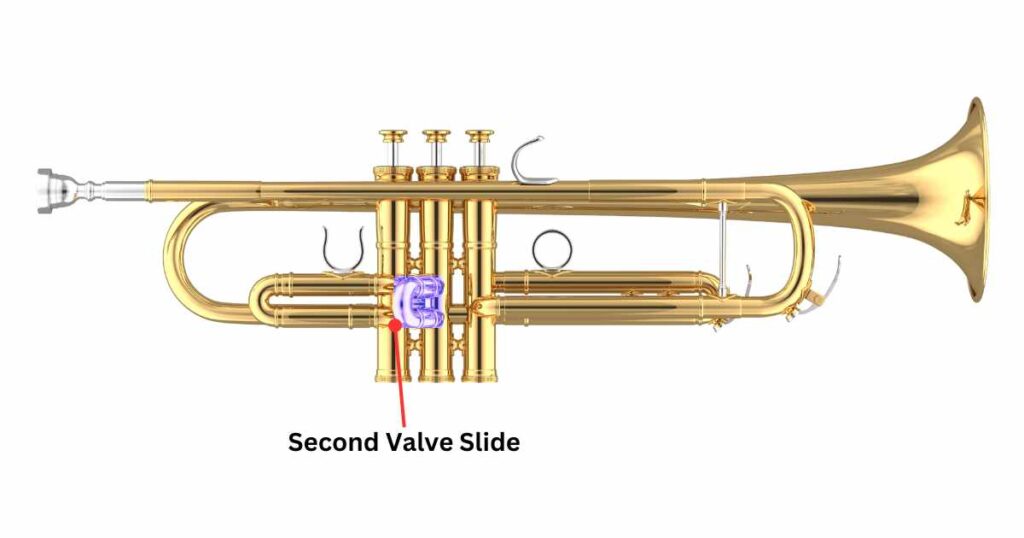
The second valve slide is half as long as the first one. It allows you to make subtle tweaks while giving access to clean the casing for cleaning of the second valve. Though subtly changing pitch, its presence is absolutely crucial to creating that sweet harmonic balance in trumpet sound.
Third Valve Slide
The third valve on a trumpet is farthest away from its musician. This valve brings down the pitch by three semitones and is used for playing low C# and low D. This third valve slide should never be neglected!
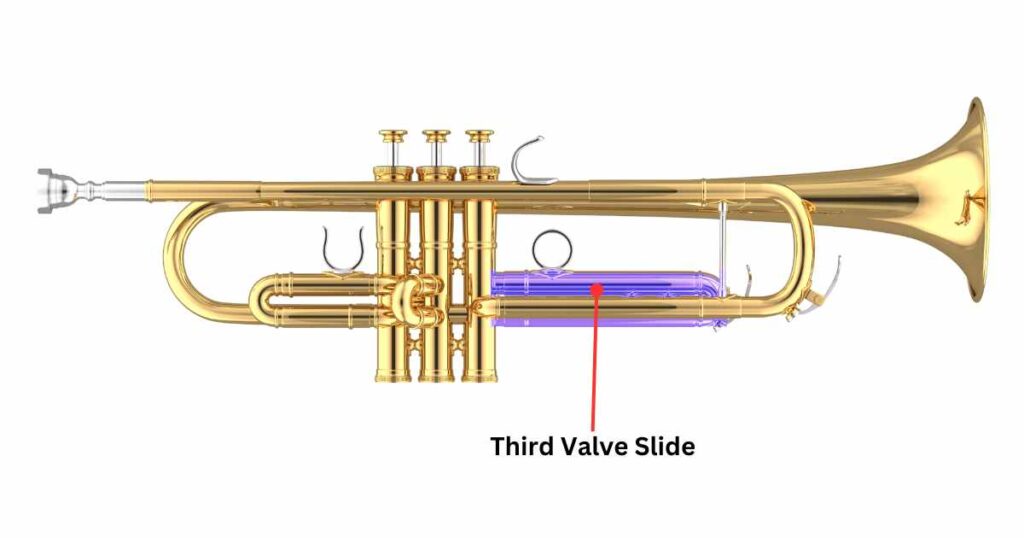
Maintaining smooth movement requires keeping slides well lubricated with grease; applying this routinely should help ensure smooth sailing. Regular care is key in tricky or stuck slides to keep things operating as they should.
Yamaha offers this amazing guide on how to play trumpet from one of the leading manufacturers of brass instruments — check it out today!
Finger Rings
Finger rings are metal loops attached to trumpets for easier handling. Crafted out of base metal coated in a similar material as the rest of its parts — finger rings offer you a firm grip while helping evenly disperse weight.
Most trumpets feature three finger rings/hooks for you to grip when holding and playing their instrument; these handy features allow for free hands for fingering, making adjustments or turning pages!
First Valve Ring
A first valve ring (also referred to as the first trigger) serves as an attachment point on an instrument’s first valve slide that allows its player to fine-tune intonation using this first valve slide.
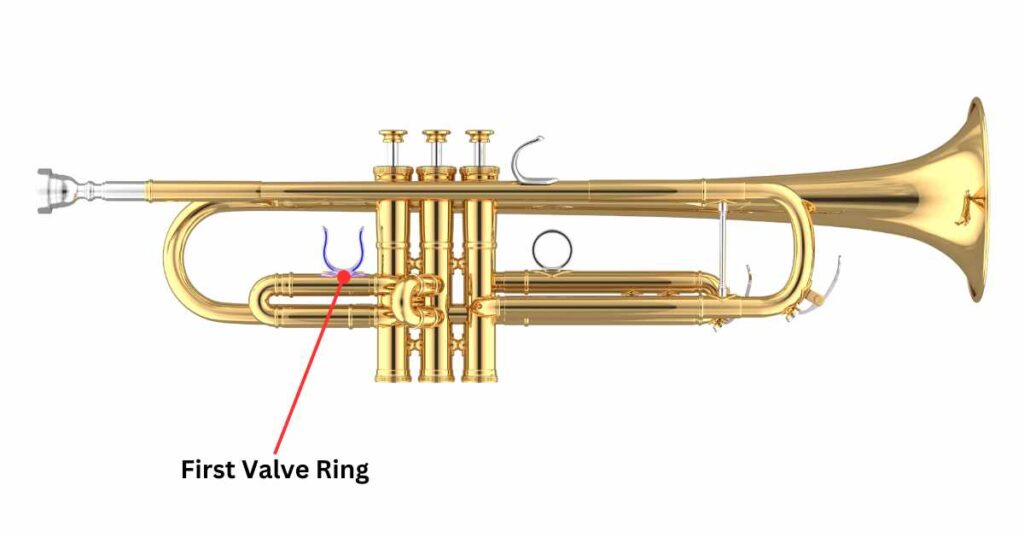
Simply by inserting their left thumb through this ring and pushing out on it with their thumb, musicians can fine-tune their intonation more precisely using this first valve slide — not simply for comfort purposes but to improve sound quality and pitch alignment even further.
Pinky Ring
Pinky rings on trumpet leadpipes support the right pinky finger for steady playing while maintaining stability during the performance. Furthermore, these handy rings make sheet music flipping easier!
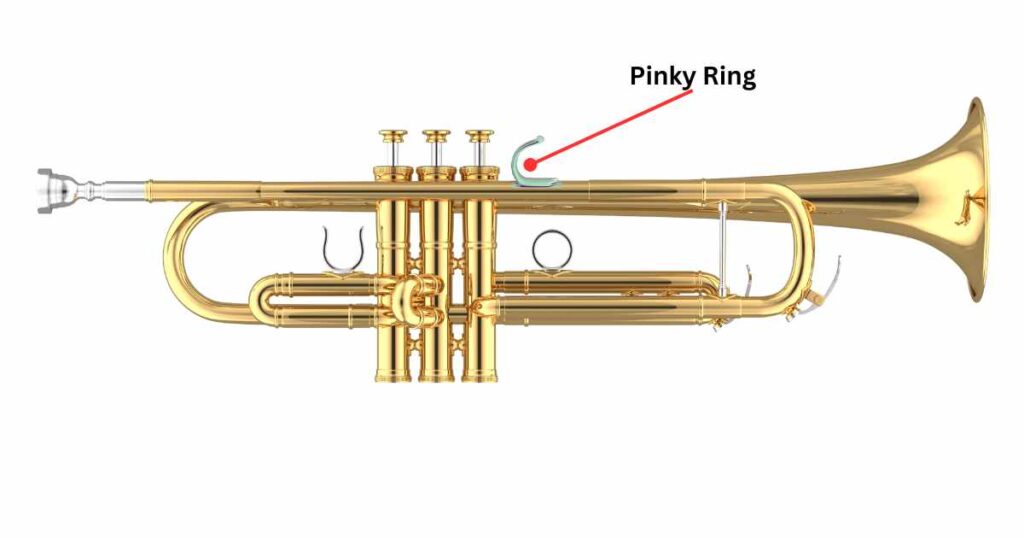
Note to players, though: it’s best not to keep your pinky finger always inside of the ring! Some players might try to compensate for weak embouchures by pressing too hard on their mouthpiece, which may interfere with tone quality and even cause injury — it is advisable not to do this!
Third Valve Ring
A third valve ring serves as an add-on for the third valve slide of a trumpet and helps quickly adjust notes by fastening onto your left pinky. You can easily make adjustments so it fits any hand size!
Musicians can easily adjust the pitch of the third valve using its third valve ring to achieve their desired sound.
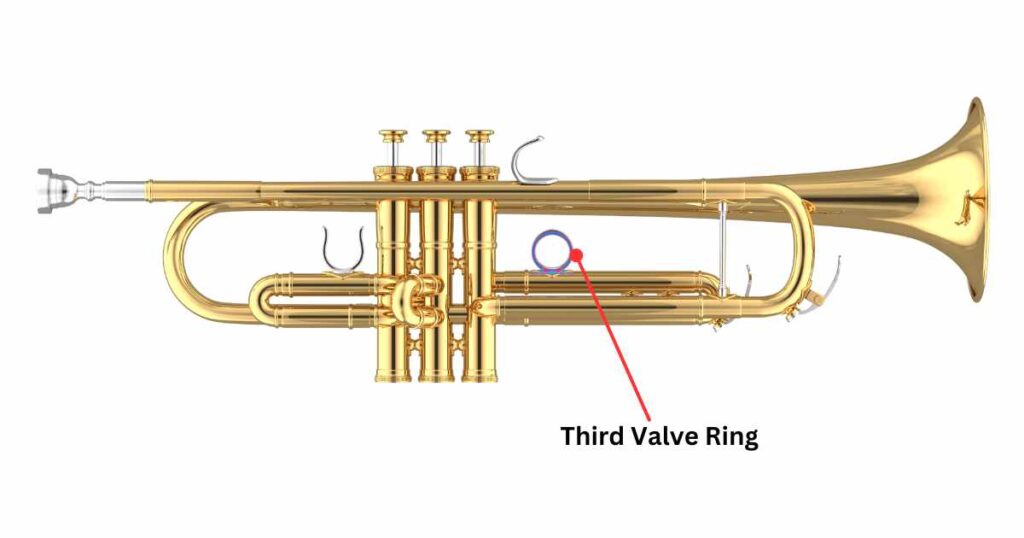
Find your ring’s ideal spot by holding the trumpet in an easy playing position and letting your pinky rest naturally upon it — don’t force or squeeze your pinky into it; allow nature to guide its placement — before adjusting it until your pinky’s position matches perfectly.
Water Key (Spit Valve)
While playing, saliva and moisture from our breath can create build-up on a trumpet that causes it to produce unpleasant sounding gurgles and noises. No need to fret; that is where water keys, or spit valves come into play: These allow moisture released as soon as it builds up during playing! They help release it by opening with their springy tongues — although we sometimes refer to these valves as ‘spit valves”.

Water keys can be found either on the Main Tuning Slide or the Third Valve Slide — where water often gathers. A common form of a water key features a lever with an indented hole covered by a cork that, upon pressing, opens so as to allow you to expel the excess liquid through an opening in its body allowing rapid removal of moisture quickly and efficiently.
These valves consist of small pieces of rubber, cork or felt that cover an opening in a pipe. While playing music, water keys should be used to drain any build-up of water inside an instrument’s pipes. When crackling sounds are heard during performance – you should know when and how best to utilize this tool! Crackling sounds could indicate it needs draining off!
Check out our post featuring 11 Incredible Trumpet Players (with video!) that will instantly inspire!
Conclusion
As stated, the trumpet is an immensely versatile musical instrument used across different music genres. Understanding its 15 key parts and how they impact sound and function will elevate your playing game exponentially – take some time now to gain this knowledge — thank you so much for being part of our Ultimate Anatomy Guide 2023; take your time jamming and enjoy exploring everything the trumpet has to offer; we have only begun!

